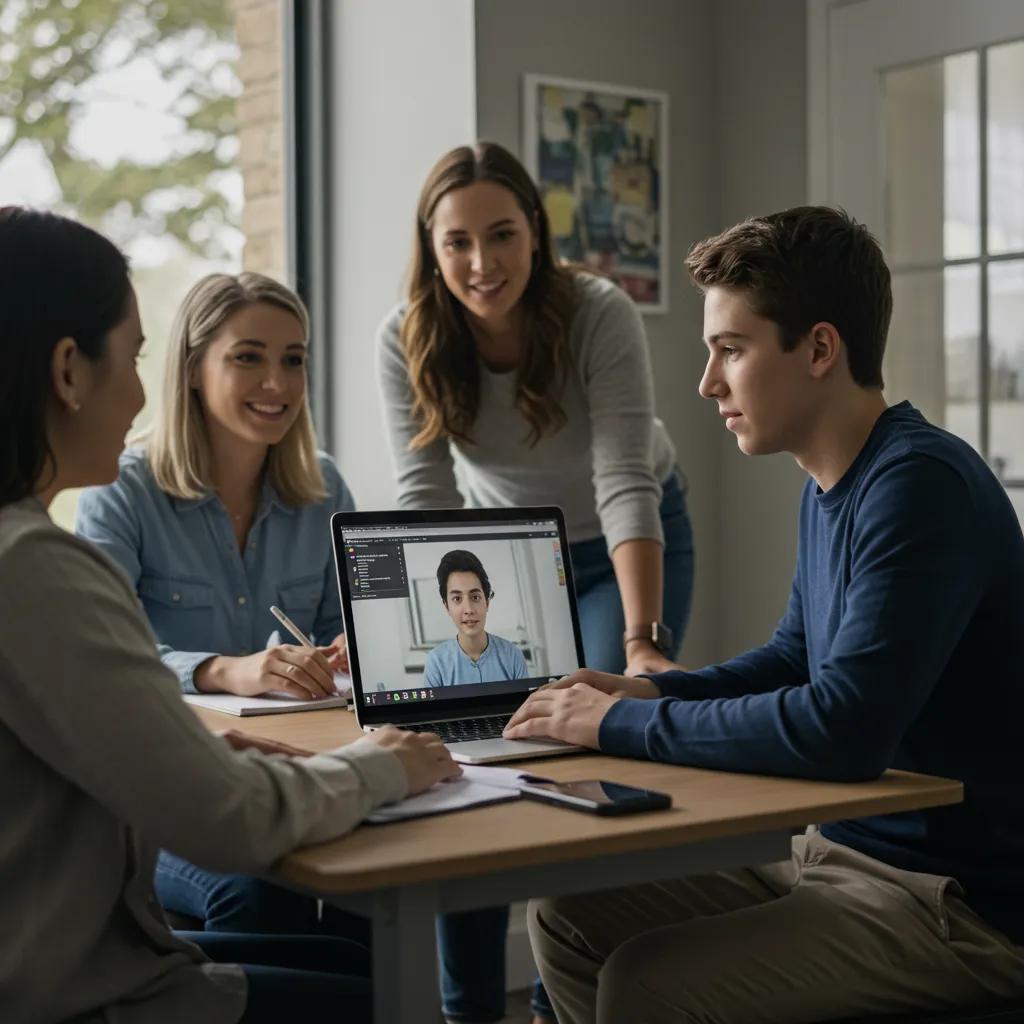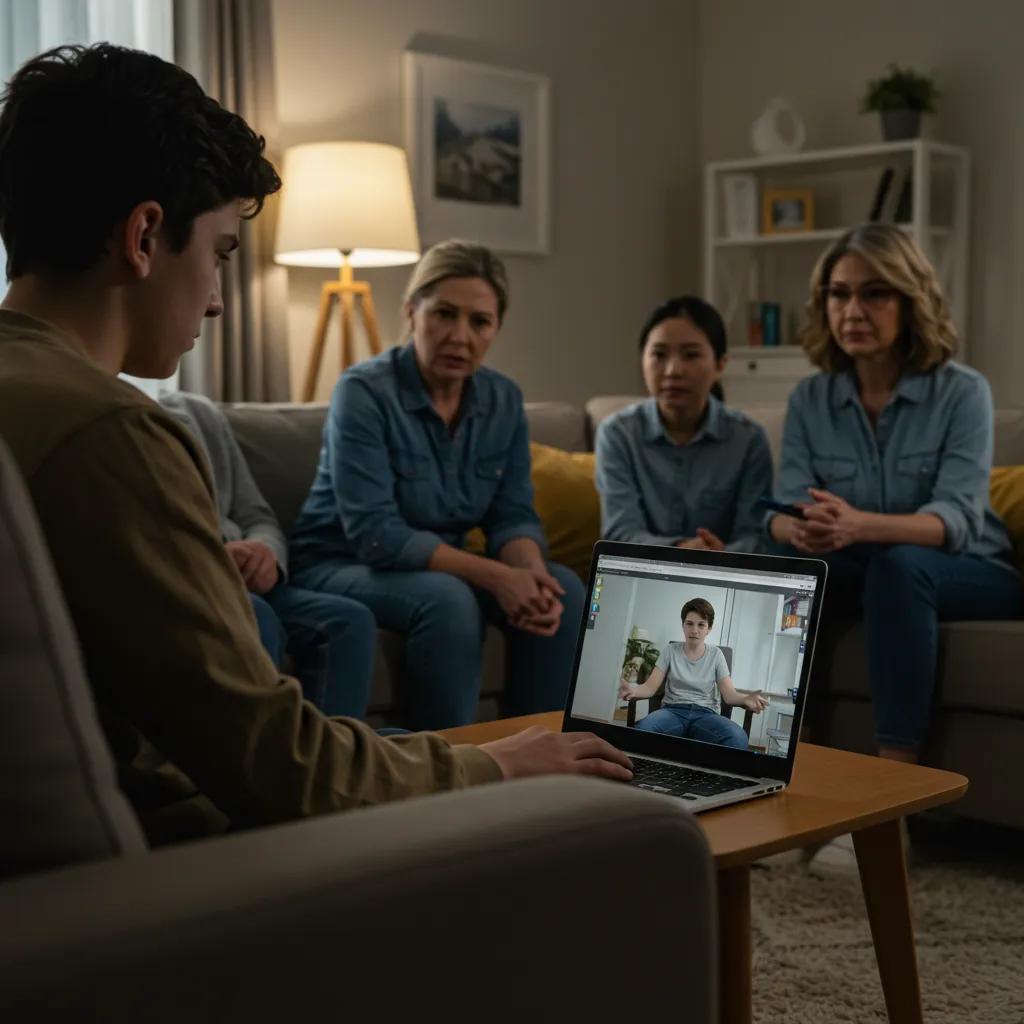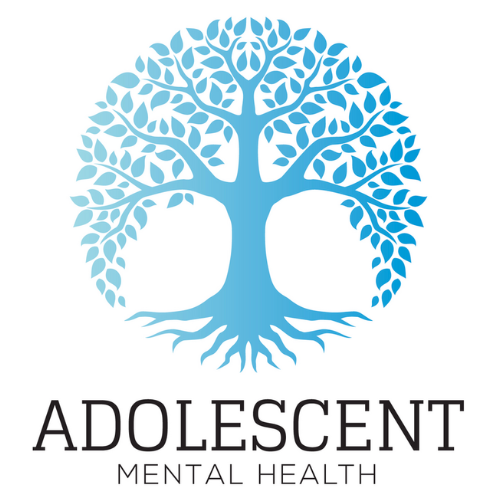Teen Depression Support in Laguna Hills: Finding the Right Help with Virtual IOP and Online Therapy
Teen depression is a clinical mood disorder that causes persistent sadness, loss of interest, and functional decline; recognizing it early helps families access timely care and reduce long-term harm. This article explains signs and symptoms, how virtual intensive outpatient programs (IOPs) and online therapy work, where families in Laguna Hills can find affordable options, and how parents can choose and support treatment. Current research shows evidence-based therapies such as CBT and DBT reliably reduce depressive symptoms in adolescents when delivered with consistent engagement, and telehealth models now broaden access for busy families. Parents and caregivers will learn practical recognition cues, step-by-step guidance for checking insurance and affordability, and actionable communication tips to encourage teen participation in treatment. The piece maps the signs of depression, defines a Virtual IOP and its therapies, compares cost and insurance considerations, and offers a parent-focused checklist for choosing programs and supporting recovery. Throughout, related conditions such as anxiety, ADHD, PTSD, OCD, and bipolar disorder are referenced where they commonly co-occur with depression to aid comprehensive assessment.
What Are the Signs and Symptoms of Teen Depression?
Teen depression is a persistent change in mood and functioning that lasts weeks and interferes with daily life; biologically, mood dysregulation reflects altered neurotransmitter and stress-response pathways, and clinically it results in decreased motivation and impaired concentration. Early recognition helps families seek evidence-based interventions that improve school performance and relationships. The following list highlights core symptoms to watch for and differentiates clinical depression from transient moodiness. These observable signs provide clear triggers for initiating a conversation with a clinician or school counselor, which is the next step after noticing concerning patterns.
Common signs and symptoms of teen depression include:
- Persistent sadness or tearfulness most days for two weeks or longer.
- Marked loss of interest in friends, activities, or hobbies the teen previously enjoyed.
- Significant changes in sleep, appetite, energy, or concentration that affect school performance.
These symptoms often cluster with behavioral changes like withdrawal or increased irritability, and recognizing several together should prompt further evaluation.
How to Recognize Persistent Sadness and Mood Changes in Teens
Persistent sadness differs from normal adolescent mood shifts because it is consistent across settings and time and reduces the teen’s ability to function. Look for changes that last at least two weeks, involve multiple areas (home, school, social), and are accompanied by reduced participation in routine activities. Parents can keep simple logs of mood, sleep, and school attendance to present to a clinician, which clarifies patterns and informs care decisions. Monitoring these trends helps determine whether structured treatment such as therapy or an intensive program may be appropriate, leading into a discussion of program options.
What Behavioral and Emotional Signs Indicate Depression in Adolescents?
Behavioral signs often include social withdrawal, declining grades, missed classes, and risky behaviors; emotional signs include hopelessness, irritability, diminished self-esteem, or talk of self-harm. These manifestations may overlap with anxiety, ADHD, or substance use, so noting context and timing is important for accurate assessment. Family reports about changes at home combined with teacher feedback on school functioning create a fuller picture for clinicians. Identifying these patterns supports targeted interventions like CBT for negative thinking or DBT skills for emotional regulation.
How Does Teen Depression Affect Daily Life and School Performance?
Depression commonly impairs executive functions needed for school—planning, concentration, and homework completion—leading to lower grades and strained relationships with teachers and peers. Teens may avoid social situations, skip classes, or show decreased participation in extracurriculars, which compounds isolation and academic decline. Early intervention can restore routines, re-engage teens with learning, and reduce risk of chronic impairment. Recognizing academic and social impacts encourages families to prioritize treatment and coordinate with school support services to support recovery.
How Does a Virtual Intensive Outpatient Program Help Teens with Depression in Laguna Hills?

A Virtual Intensive Outpatient Program (Virtual IOP) for teens delivers structured, evidence-based treatment remotely by combining multiple weekly therapy hours, psychiatric care, and family involvement to produce measurable symptom reduction. The mechanism relies on frequent therapeutic contact, skills practice (CBT/DBT), and coordinated clinical support that together improve emotion regulation and functioning. Virtual delivery increases accessibility and continuity by reducing commute barriers and enabling more consistent attendance, which often improves outcomes for adolescents. Below is a concise breakdown of typical program components to clarify what families can expect when considering higher-intensity outpatient care.
This Virtual IOP includes core components compared below for clarity:
| Component | Attribute | Typical Offering |
|---|---|---|
| Individual Therapy | Frequency | Weekly one-on-one sessions focused on CBT or DBT skill application |
| Group Therapy | Format | Multiple weekly skill-based groups for emotion regulation and peer support |
| Family Therapy | Purpose | Weekly sessions to improve communication and family problem-solving |
This comparison shows how combining individual, group, and family elements under a coordinated plan supports comprehensive adolescent recovery and prepares families for logistics like scheduling and follow-up care.
What Is a Virtual IOP for Teens and How Does It Work?
A Virtual IOP for teens typically provides 9–15 hours of online treatment spread across 3–5 days per week, combining individual, group, and family therapy with psychiatric medication management when needed. Secure telehealth platforms and parental consent procedures help ensure privacy and safety while clinicians monitor attendance, progress, and risk. The structured cadence promotes daily practice of therapeutic skills and rapid clinical feedback, which boosts learning and symptom reduction. Understanding this schedule helps families weigh intensity against need and prepares them to support consistent engagement.
Research indicates that remote intensive outpatient programs can be a valuable option for youth with more complex mental health needs, offering an alternative to traditional place-based programs.
Remote IOPs for Adolescent Depression: Quality Improvement and Outcomes
Although intensive outpatient programs can be an effective option for youth with more complex mental health needs, place-based intensive outpatient programming locations are still limited to clients who have the ability to travel to the clinical setting several days per week. The objective of the analysis reported here was to assess changes in depression between intake and discharge among youth and young adults diagnosed with depression attending remote intensive outpatient programming treatment.
Treating Depression in Adolescents and Young Adults Using Remote Intensive Outpatient Programs: Quality Improvement Assessment, P Solomon, 2023
What Therapies Are Included in the Virtual IOP: CBT, DBT, and Family Support?
The Virtual IOP uses evidence-based modalities such as Cognitive Behavioral Therapy (CBT) to address negative thinking and behavioral activation, and Dialectical Behavior Therapy (DBT) to teach emotion regulation and distress tolerance skills. Family therapy sessions focus on communication, setting expectations, and reinforcing skills at home to improve family functioning and treatment adherence. Psychiatric care provides medication assessment and management when clinically indicated, integrating biological and psychosocial approaches. Together these therapies form a meronomic structure—individual sessions, group skills training, and family work—that targets symptoms and daily functioning.
What Are the Benefits of Online Therapy Compared to Traditional Outpatient Care?
Online therapy reduces logistical barriers like travel time and scheduling conflicts, enabling more consistent attendance and participation in higher-intensity programs. Virtual formats can increase access to specialized clinicians trained in adolescent CBT and DBT, and they allow family members to join sessions from different locations for coordinated care. Telehealth also promotes rapid follow-up and flexible scheduling, which supports continuity when teens return to school or when families have work constraints. These advantages make virtual models a practical and effective alternative to conventional outpatient care for many Laguna Hills families.
For families seeking an evidence-based virtual option, Adolescent Mental Health offers a Virtual Intensive Outpatient Program (IOP) for Teens and Online Therapy that follow the structure and therapies described above and are tailored specifically to adolescent needs.
Where Can Laguna Hills Families Find Affordable Teen Depression Treatment and Insurance Options?

Many families worry about cost and coverage; telehealth IOPs often work with major private insurance plans and may be more cost-effective than residential care because they reduce indirect expenses like travel and lost work time. Verifying coverage requires contacting an insurer, confirming telehealth and IOP benefits, and asking about prior authorization and billing codes. Below is a quick table to compare coverage types and common considerations so families can prepare questions before calling their insurer.
| Plan Type | Covers Virtual IOP? | Typical Considerations |
|---|---|---|
| Private Insurance | Varies; many major plans cover telehealth IOPs | Check pre-authorization and in-network status |
| Medicaid / Public Plans | Some plans cover telehealth; policies vary by state | Confirm telehealth parity and provider enrollment |
| Self-Pay / Sliding Scale | Yes | Often more flexible scheduling and faster starts |
This table helps families prioritize verification steps and clarifies that coverage is commonly available but requires confirmation to determine out-of-pocket costs.
Which Insurance Plans Cover Virtual IOP and Online Teen Therapy?
Many major private insurance plans and some Medicaid plans may cover Virtual IOP; families should call their insurer, provide service descriptions (IOP, group therapy, psychiatric services), ask about telehealth parity, and request prior authorization requirements. Record the representative’s name, authorization numbers, and any limits on sessions or providers to avoid surprises. If coverage is uncertain, ask about in-network providers or case-management support to explore alternatives. Confirming benefits quickly enables quicker access to appropriate care.
How Does Virtual IOP Provide Cost-Effective Mental Health Support?
Virtual IOP reduces indirect costs by eliminating commute time and decreasing missed work for caregivers, which improves affordability relative to residential programs. The intensity of 9–15 hours per week concentrates therapeutic hours into a time-limited plan, often producing faster gains than low-frequency outpatient therapy, which can lower total treatment duration and cost. Families should weigh clinical need, insurance coverage, and logistical burdens when comparing options to determine overall value. This perspective guides the decision between home-based virtual care and more disruptive residential placements.
What Local Laguna Hills Resources Support Teens and Families Beyond Virtual Care?
Local school counseling services, campus support programs, and community hotlines provide complementary monitoring and crisis intervention alongside clinical treatment; these resources often coordinate with clinicians to support academic accommodations and safety planning. Parents should contact their teen’s school counselor to discuss attendance plans, 504 accommodations, or short-term academic supports. Community groups and online peer resources can supplement therapy by offering social skills practice and parent education. Using local supports in combination with virtual clinical care strengthens a teen’s recovery network and fosters reintegration at school.
How Can Parents Support Their Teen’s Mental Health and Choose the Right Treatment?
Parents play a central role in identification, access, and ongoing support; effective parental involvement starts with compassionate conversations, assessing program quality, and prioritizing evidence-based therapies with family inclusion. A practical checklist helps evaluate programs for licensed clinicians, clear treatment plans, measurable goals, and insurance assistance. Below is a comparison table to clarify trade-offs among common levels of care so parents can match intensity to clinical need and family capacity.
| Program | Intensity (weekly hours) | Family Involvement | Typical Use Case |
|---|---|---|---|
| Virtual IOP | 9–15 hours | High: family sessions included | Moderate-to-severe depression needing structured support |
| Traditional Outpatient | 1–4 hours | Variable | Mild-to-moderate symptoms or maintenance care |
| Residential / PHP | 30+ hours / day | Varies | Severe cases requiring continuous supervision |
This table clarifies how Virtual IOP balances intensity and family involvement to provide effective care without residential disruption.
What Are Effective Ways to Talk to Your Teen About Depression?
Begin with open, nonjudgmental questions and validate feelings; say things like, “I’ve noticed you seem down and I want to understand how you’re feeling” to invite dialogue. Use short sentences, avoid lecturing, and reflect feelings back to show empathy and reduce defensiveness. Offer concrete next steps—making an appointment, contacting their school counselor, or trying an online therapy session—so the conversation leads to action. These approaches promote trust and increase the likelihood the teen will engage in recommended treatment.
How to Identify the Best Mental Health Program for Your Teen in Laguna Hills?
Look for programs that use evidence-based therapies (CBT, DBT), licensed adolescent clinicians, measurable treatment goals, and explicit family involvement; ask about weekly hours, clinician credentials, and how progress is tracked. Red flags include vague treatment plans, lack of licensed staff, or reluctance to include family when appropriate. Request a clear intake assessment process and examples of expected outcomes to compare providers effectively. This evaluation helps match program intensity to the teen’s clinical needs.
What Role Does Family Therapy Play in Teen Depression Recovery?
Family therapy improves communication, aligns expectations, and addresses relational patterns that may maintain depressive symptoms; it helps caregivers learn supportive responses and problem-solving strategies. Typical goals include reducing conflict, improving monitoring, and reinforcing therapeutic skills at home to sustain gains from individual and group sessions. When families participate actively, adolescents show higher engagement and better functional outcomes in school and social settings. Including family work in treatment plans therefore increases the odds of durable recovery.
Near the end of this decision process, consider structured virtual programs such as Adolescent Mental Health’s Virtual Intensive Outpatient Program (IOP) for Teens as one option that combines evidence-based therapies, family involvement, and flexible scheduling; families can contact providers to schedule an assessment and verify fit.
What Are Common Questions About Teen Depression Treatment and Virtual IOP in Laguna Hills?
This section answers frequent practical concerns about effectiveness, time commitment, and engagement to help families make informed choices. Short, direct answers follow evidence-based reasoning and offer concrete next steps for verification and enrollment.
Is Virtual Therapy Effective for Treating Teen Depression?
Yes. Recent studies and clinical experience indicate virtual delivery of evidence-based therapies like CBT and DBT achieves outcomes comparable to in-person care for many adolescents, particularly when sessions are frequent and families are involved. Benefits include improved access, consistent attendance, and the ability to practice skills in the home environment. For severe or complex cases, combining telehealth with in-person supports or higher levels of care may be necessary.
How Many Hours per Week Does the Virtual IOP Require?
Typical Virtual IOPs require 9–15 hours per week delivered across 3–5 days, which balances intensity with daily life demands to maximize skill acquisition and symptom reduction. Program length and weekly hours are individualized based on clinical assessment, risk level, and progress, allowing clinicians to step up or step down intensity as needed. Understanding this range helps families plan schedules and assess feasibility.
How Can Teens Stay Engaged and Motivated in Online Therapy?
Engagement improves when sessions are interactive, goal-oriented, and incorporate teen interests; use short, varied activities, integrate technology for skill practice, and set collaborative goals to enhance motivation. Parents can support engagement by creating a private, consistent space for sessions, reinforcing practice between sessions, and celebrating small gains. Clinicians should monitor engagement and adjust format or pacing to maintain meaningful participation and outcomes.









